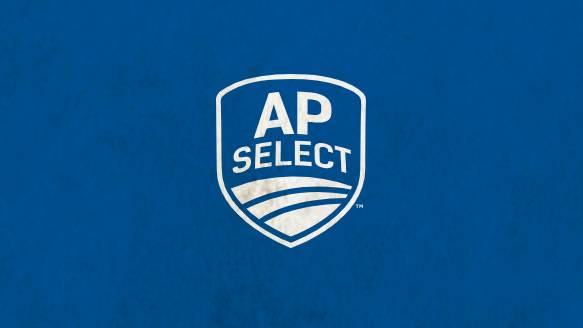How to Successfully Manage Multiple Generations in Your Agribusiness
The ag industry faces a unique challenge: The largest generation gap in history. Many agribusinesses now have multiple generations (up to five in some cases) working side-by-side, which can be a blessing and a curse based on your culture and how those gaps are managed.
You don’t have to look too far to notice these generational differences create misunderstandings and conflict in many organizations. Unfortunately, many focus on those challenges and miss the opportunity to leverage the knowledge base and experience that can be shared between those multiple generations. The good news is that these differences can turn from a cure to rewarding with a few adjustments to long-standing programs.
Mentorship
Too often we think of mentorship as a one-way street, with the more experienced employee coaching the younger or newer employee. However, the real opportunity is in making this a two-way street, where experienced employees can benefit from a younger generations’ insight in adapting to the changes in the modern workplace.
Remember that each generation has something uniquely valuable to offer. Instead of creating a formal mentorship process, try creating an environment that supports mutual mentorship. Airbnb is known for an example of this with a practice they call “Speed Mentoring.” In this process, people are paired up and given a timeline to talk to each other about a certain topic. The goal is to provide mentees with a quick overview of a certain subject or field and allow them to ask questions.
Although it’s a spin on the speed dating concept, it works for building trust and rapport. It allows for an exchange of knowledge where a traditional mentor conversation is only one-way. Bringing together employees of different ages allows them to interact on a regular basis. This breaks down any barriers that may exist between different age groups. Social media savvy can be taught by younger employees, while older employees can coach in the nuances of face-to-face interactions. The two-way mentorship is especially useful when younger workers are in leadership roles, because it encourages respect to flow in both directions.
Communication
Don’t only use the communication approach that you like best. Every person has a preferred method of communication, so organizations should utilize various communication methods in each area of their business. Although many managers like to use face-to-face meetings and phone calls in their normal routines, make sure your team includes texting and other messaging methods as well.
Don’t forget that many workers may have grown up in a generation before cell phones and email and may prefer to communicate via in-person conversation or phone calls. Leverage the knowledge of your entire team, and routinely discuss best practices for communication. It’s an opportunity for everyone to learn, and a way for multiple generations to collaborate to ensure the best communication tools and methods are being used both within the company and with your customer base as well.
Respect
People are more apt to listen to input if they feel their own knowledge and contributions are respected in that same environment. Therefore, the first step in building teamwork is to recognize that each generation is looking for the same amount of respect. The only difference is how its measured. Baby Boomers are known for their work ethic, are motivated by challenges, and appreciate being respected for their maturity. Gen Xers, born between 1965 and 1980, want to be respected for their self-reliance and independent skill sets.
Millennials, born 1980 and 1995, seek respect for their ability to multi-task, collaborate, and be flexible. Finally, Gen Z, those born after 1995, value the opportunity to have a voice, and that voice is making a difference. Each of these groups holds their supervisors responsible for understanding these basic needs, and leaders that recognize the value of these differences have a much better chance of establishing a high-performing team!
Accidental Segregation
Now that I’ve shared the reasons each group is different, be careful not to inadvertently lump individuals together, or allow them to naturally come together based on these same peer groups. Sometimes it’s unavoidable human nature since conversations tend to come more easily when people are at a similar point in life. However, it’s consistently proven that organizations that encourage multiple generation work groups are more innovative and productive due to the unavoidable cross-pollination of ideas and methods.
Benefits
Generations come with different needs and expectations. If you don’t tailor your benefits to the needs of each generation, you run the risk of alienating or losing them.
If you have younger employees, you might want to offer them a flexible work schedule, part-time hours, or lower pay for a few days per week so they can balance job and other responsibilities.
If older employees are particularly sensitive about their age, make sure to consider your company’s pension plans and retirement benefits as part of their overall compensation package.
It’s important to remember that boomers will retire soon, and Gen Xers will be retiring in the next decade or so. It is critical that employers adequately plan for these retirements so they can attract quality replacements with whom they can do business for many years to come.
Lead By Example
The first step to cultivating a relationship among different age groups within your company is to take the lead. Regardless of your age or that of your team, try to dedicate time and effort to act as a mentor.
- Reach out to members of your team who you think would benefit from your expertise, who can educate you on other subjects in return.
- Outline the goals you both hope to achieve from this mentorship.
- Carve out a time in your schedule for questions and regular check-ins.
This will get the ball rolling and showcase an ideal model of mutual mentorship that anyone in the company can replicate.
Be Part of the Solution
Given the demographic shifts impacting the ag industry talent pool, organizations need to take a proactive approach to retain veteran employees and adapt team dynamics to ensure all generations feel respected and rewarded in this process. Leaders who understand their role in making this happen and recognize their ability to help their employees learn and collaborate (regardless of age) will be best positioned to retain those employees and build an effective and ongoing team.






